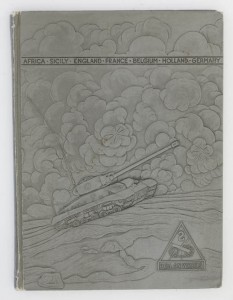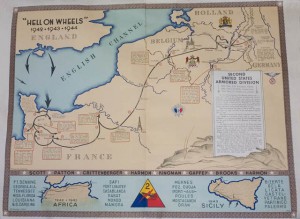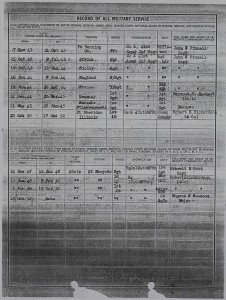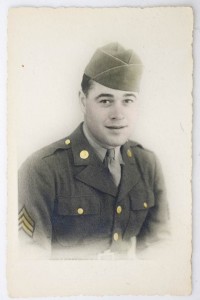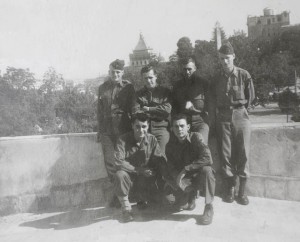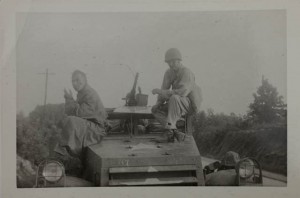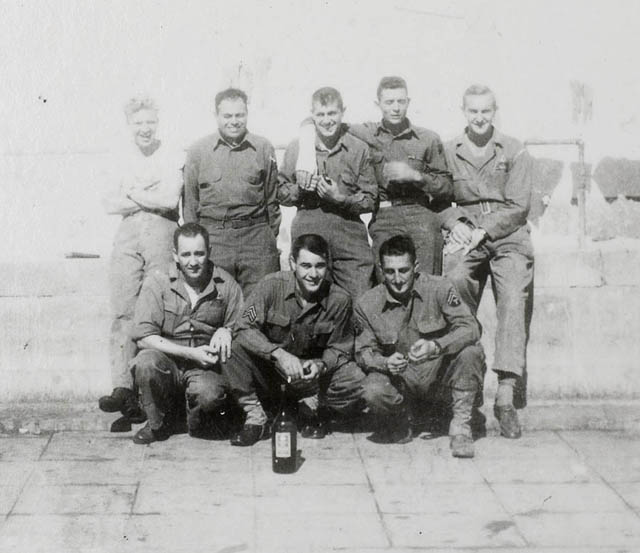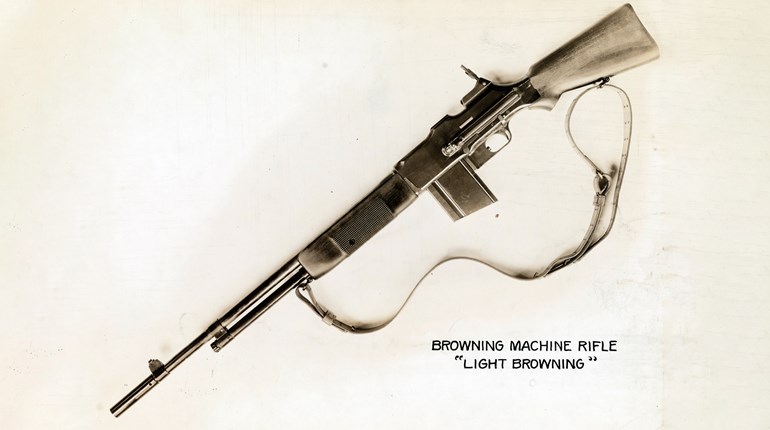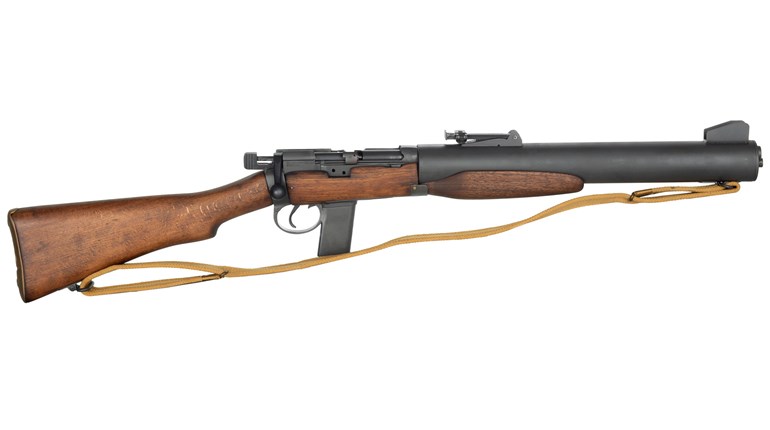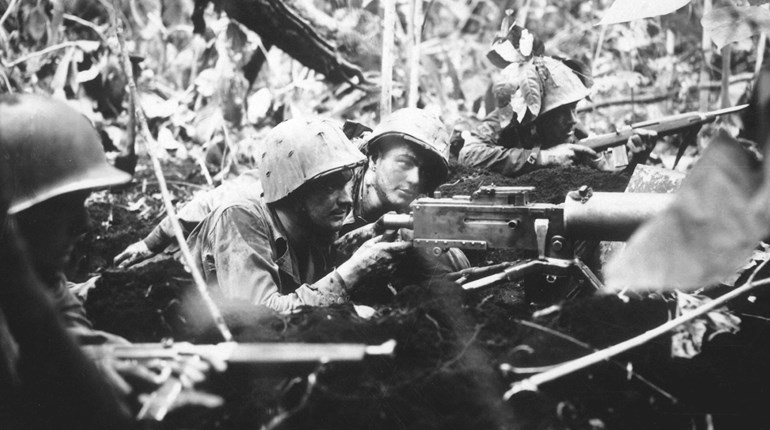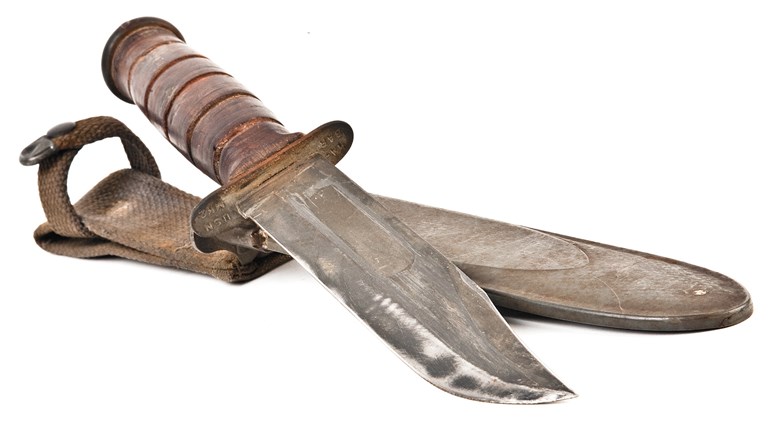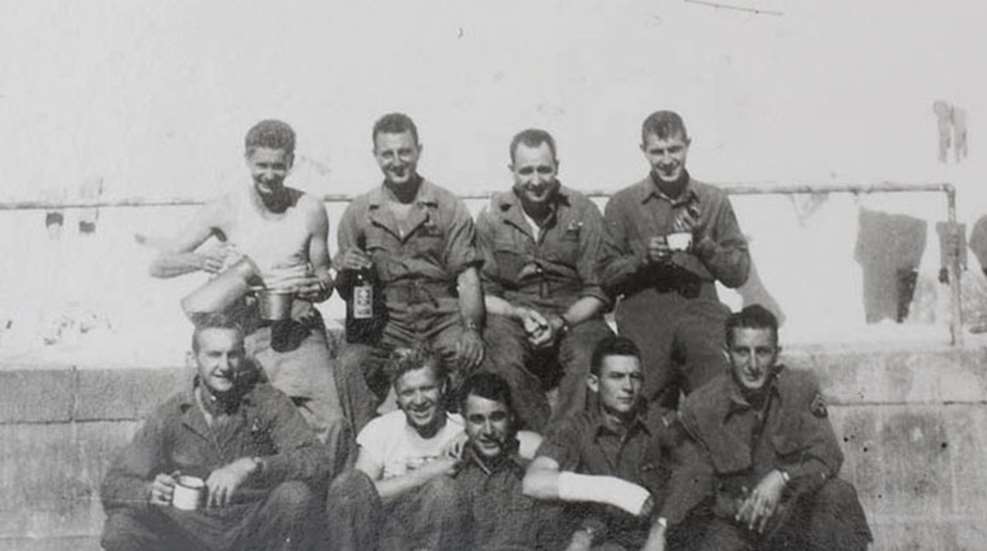
By Jeff Redding
My grandfather, AJ "Bud" Eichman, passed away about two years before I was born. My mother and grandmother relayed to me stories about how good of a man he was, so I had the chance to know of my grandfather, but a huge gap of history was missing for me as both grandma and mom told me that he never talked about his time in the military during World War II. This became my quest, my obsession if you will. I had to find out where he went and what he did. I had no idea where the research would take me or what I would find, but I felt compelled to provide my family with the knowledge of what their father/grandfather did and for myself to become a little closer to a person I had never met. (For a complete gallery of photos of Sgt. Bud Eichman, go here.)
I started with the material I had on-hand, a "History of the Second United States Armored Division 1940 to 1946." It told the story of the 2nd Armored Division from its formation and training through every landing and battle in World War II to the final occupation of Germany. This was a treasure trove of information, detailing battle group movements and listing the organic make-up of each battle group. This helped provide me with perspective and context of where my grandfather served in World War II, the timing of his movements and the opposition he faced.
Tucked in the back of the book, I found additional pieces of memorabilia. First, I unfolded a campaign map of the 2nd Armored Division. The map is in full color, 48x24 inches, and it lists movements of the 2nd Armored Division and its battle groups through World War II with notes about specific battles. I felt like I had uncovered the Jubilee diamond. The map was in near perfect condition except for a few crease marks, lists all of the organic units of the 2nd AD, the Division commanders and enemy faced. I poured over that map like it led to Blackbeard's treasure, devouring every little shred of information the map provided to me.
The second piece of memorabilia was a Christmas card from the 2nd Armored Division. As I opened the card, I saw it had my grandfather's signature, "Bud," on the bottom, with a "'44" next to it. Goosebumps covered my arms as I realized that he had to have sent this card home from the front lines of the Battle of the Bulge.
My next step was having my mother write to the National Archives requesting his service records. I was waiting with guarded optimism for the records, since the St. Louis Archives had a massive fire in 1973, in which almost all of the records of US Army personnel discharged between 1912 and 1969 were destroyed. I wasn't sure what I was going to learn or find in these records, but it would at least give me more specifics of where and when he served. If the records were still archived, I would know what regiment and company he served with, what ranks he attained and any commendations awarded. With that information, I would be able to coordinate my general knowledge of troop movements with his actual movements.
My mom received a manila envelope in the mail from the Archives and called me. I opened it like a 10-year-old opening Christmas presents. Pouring over all of the old data led me to some surprising finds.
Bud Eichman served in Company A of the 41st Armored Infantry Regiment, one of the original organic units of the 2nd Armored Division. The armored infantry traveled by way of halftrack, and the "Fighting 41st" were among the troops that saw the most action during World War II. He qualified "Expert" with the M1 Carbine, so I assumed that was what he carried in battle and trained with at Ft. Knox and Ft. Benning before leaving to participate in Operation Torch.
As a sergeant and squad leader, he shipped out in 1942 on a ship bound for Morocco and participated in the first amphibious landings in the Mediterranean Theater of Operation. Among the first US troops to see battle in World War II, Sgt. Eichman landed at Fedala on November 8, 1942, with the Western Task Force under the command of Maj. Gen. George S. Patton, Jr. The landing at Fedala faced stiff enemy resistance, but the Americans fought forward to Casablanca, gaining its surrender.
From North Africa, it was on to Sicily to participate in his second amphibious landing, Operation Husky. On July 10, 1943, at 1800 hours, he landed at Gela. During his time in Sicily, he also participated in Patton's race to Palermo. Taking Palermo resulted in him having to play a role in governmental/policing actions, as the Allied Military Government had not kept up with the rapid advance to Palermo. After capturing Palmermo, the troops were off to England and Tidworth Barracks to prepare for the invasion of Europe.
Two amphibious landings, under fire, slogging through the hills of Sicily facing the famed Herman Göring Division, racing against Monty to capture Palermo and finally heading to England to rest, train and re-supply before facing his greatest test. In the midst of all that he was awarded two Bronze Stars and I can't even begin to explain the admiration I had for the man. It made me immensely proud to know that my grandfather served his country with honor, but that was just the beginning.
By June 12th, 1944 the division landed at Omaha Beach as the first armored division ashore on French soil. My grandfather was in Combat Command B of the 2nd Armored Division, put into the line in an area known as the "International Hot Spot," because of its location between the American and British Army groups. It was here that a German attack to try and split the Allies was feared, but the troops of the 41st AIR held their ground without giving an inch.
Operation Cobra, the breakout from the Cotentin peninsula, was the next major engagement for my grandfather. This operation would allow the tankers to get out of the bocage country of Normandy into the more friendly terrain of Brittany. Grandpa's company was positioned to encircle the German troops and prevent any escape from the Falaise Pocket. Around 12:15, in the early, early morning of July 30, 1944, the men from the 41st AIRe were dug-in on a ridge above the road between St. Denis le Gast and Cambry.
The sound of mechanized vehicles stirred the men to action, and when the forms of German soldiers could be seen, they opened fire. Two columns, one of German infantry and one of German armor, were taken under fire just after midnight. Outnumbered almost five-to-one, hand-to-hand combat ensued, in pitch-black conditions, as the men from Combat Command B struggled to hold off the German advance. Our men used friendly vehicles as islands of defense, and as the numbers swelled against them, they leapfrogged from one friendly vehicle to the next. By dawn, they had broken the enemy attack and took tally of the action. More than 100 German vehicles were destroyed, more than 450 enemy soldiers lay dead and more than 1,000 prisoners were taken. The book from Mark Bando, "Breakout At Normandy, The 2nd Armored Division in the Land of the Dead" and "Hell on Wheels, The 2nd Armored Division" by Donald Houston were extremely helpful in developing my understanding of what my grandfather witnessed and fought through. In fact, it was in Bando's book that I found a member of his A company was awarded the Medal of Honor during the same engagement as grandpa was awarded one of his Bronze Stars.
Third-person accounts were crucial in molding my memory of my grandfather, and while not in his words, they allowed me the opportunity to visualize the conditions which he operated. It was important for me to gain a sense of everything that was going on around him, along with the actions of his regiment, so I could better understand the "whole picture."
To this day, I yearn for first-hand accounts, someone who served with him who could tell me personal stories, but I was not and am not going to be deterred in historical research by the lack of personal accounts. I form my own memories based on historical documentation, piecing together historical accounts with military records and a few letters home that he sent.
As a squad leader, he led his men through Northern France, Holland, Belgium and Germany, breaching the Siegfried Line and attacking the Roer River. The tank battle of Roer River was said to be the "largest of the Western Front; the most decisive action" by German radio. This may also have been the first time that US troops battled against the German King Tiger tank. The victory at the Roer was against the crack German 9th Panzer Division and the 15th Panzer Grenadiers. This action was the final major battle for the Division before the Battle of the Bulge. It was also during this time that I found he had been promoted to Master Sergeant, with his duties being that of Company A 1st Sergeant.
What is often lost in the recounts of the Battle of the Bulge are the battles that raged on the northern flank (perhaps because the northern flank was under the control of British Field Marshall Montgomery). It was here that the Germans made their greatest penetration during the Battle of the Bulge, with the goal of securing bridges over the Meuse River and attacking Antwerp, dividing the American and British Armies. On December 21, 1944, the Germans were only 3 miles from their goal of the bridges. It was in the area of Celles, Belgium that the 2nd Armored Division blunted the German salient.
Starting at 11 p.m., on December 21st, in blackout conditions, with fog, snow, ice and mud making driving conditions hazardous at best, the 2nd Armored Division moved 3,000 vehicles more than 100 miles in a race to protect the bridges over the Meuse. This remarkable forced march allowed the division to crush the German 2nd Panzer Division on Christmas Day in and around the city of Celles, Belgium. American Corps headquarters issued a statement after the battle saying "The attack of the Second Armored Division may well be remembered a saving one of the far-reaching effects of any action of World War II…" The sheer thought of what these troops endured, I know from a letter I had found that my grandpa stated he had been on the front lines for more than 90 days straight during this time, is truly remarkable. The perseverance, fortitude and the ability to carry out orders in the finest fashion under the worst possible conditions further cemented my belief as to what kind of man my grandpa Bud was.
I don't know if I could feel any more proud of him and honored to be his grandson. Never wounded, five Bronze Stars, continuous combat, horrific conditions, four years without seeing the USA…whenever I think I have it bad, I just think of this man and realize I have nothing in front of me that can't be overcome. He may never have had the opportunity to set me on his knee and impart his sense of duty and honor to me, but I feel it every day.
